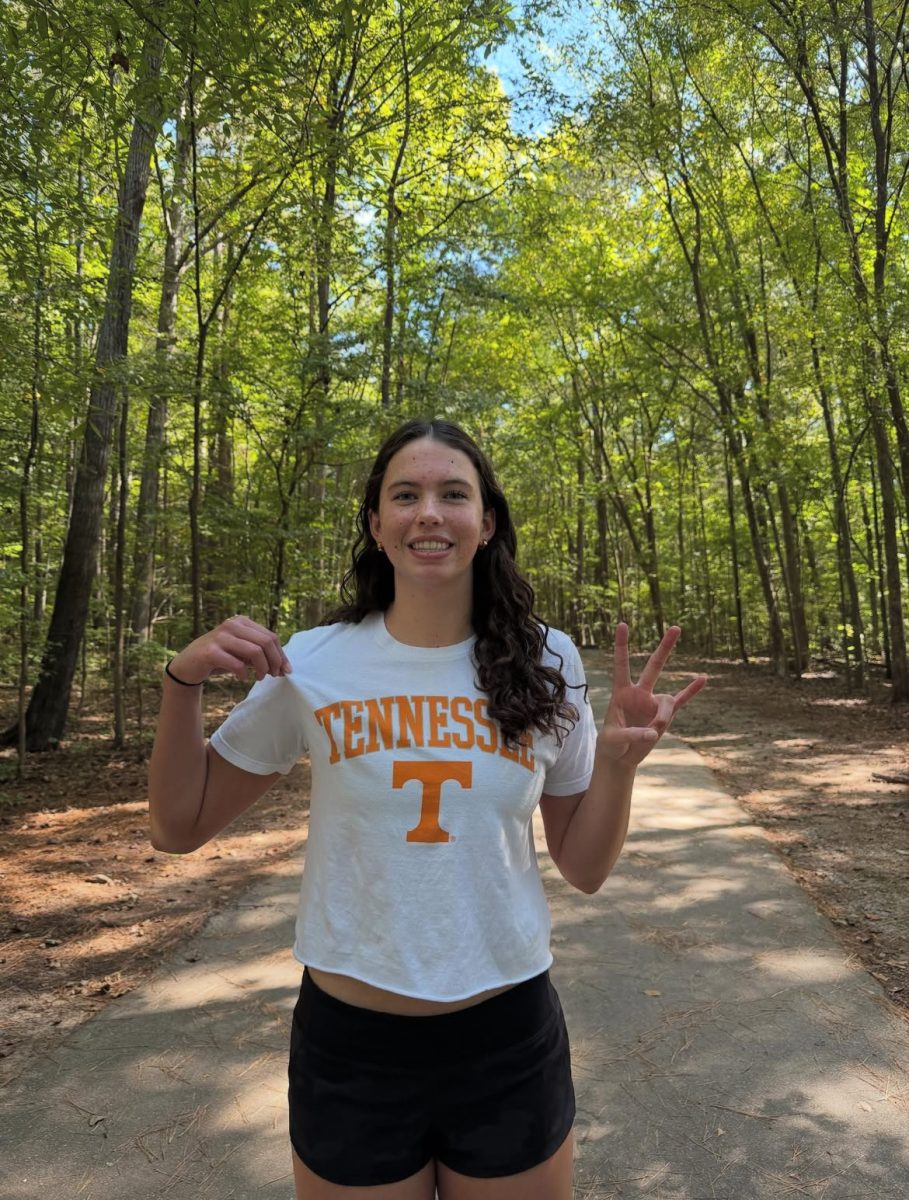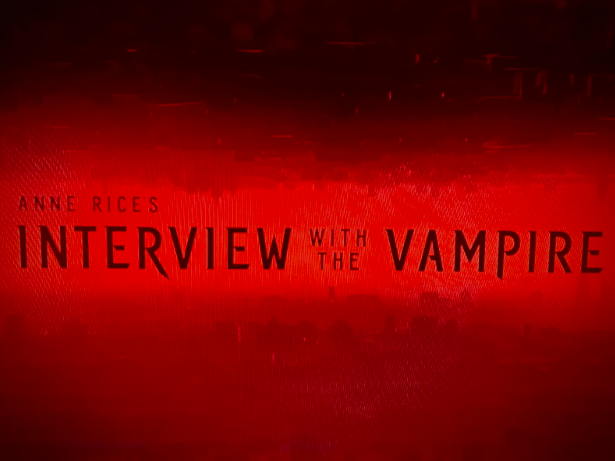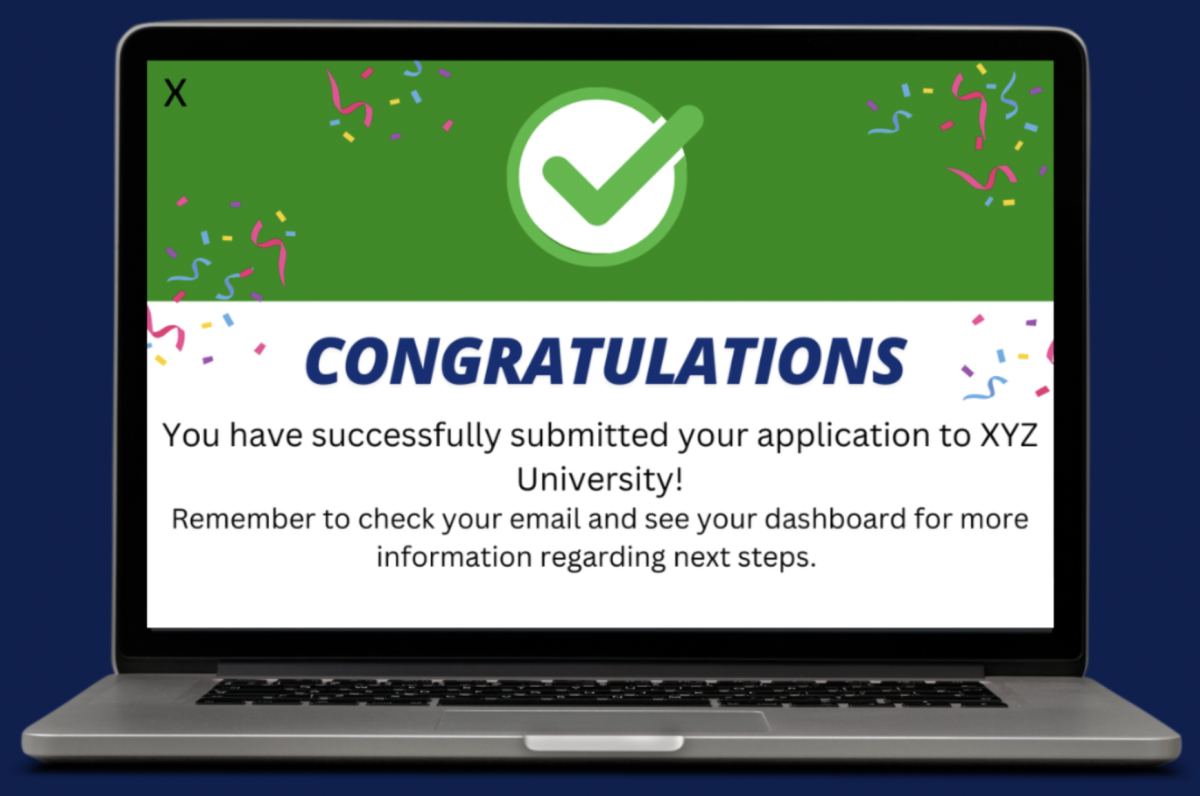The college application process is a strenuous and tiresome part of the senior experience for many high school students applying to universities in the United States. While many Early Action (EA) and Early Decision (ED) deadlines having passed, a large weight is off many students’ shoulders. However, after the joy of finally hitting that “submit” button – and receiving the complementary confetti – the long list of tasks is not complete. It is important to stay on top of these remaining steps so that all the work completed up to this point can result in the best outcome possible.
Take a break (seriously!)
Though there are still crucial steps to be completed, taking time away from application-related work is crucial for your mental health. Spend time on things you love to do that you may have had to give up due to the tremendous workload. It can be very gratifying to get back into old hobbies and take time for yourself. Getting 30 minutes of exercise a day, even if it’s just an enjoyable outside walk, can improve your mood and your health. Things such as sleeping more, meditation, listening to music, reading, spending time outside, and partaking in low-stress hobbies are proven to improve mental health. Whatever it may be, look for ways to incorporate these into your daily routine to give yourself a well-deserved break before jumping back into applications.
… But don’t relax too much. Make sure you set up your portals.
College admissions portals are a vital tool for all the work needed after the Common Application stage of applying. While you should receive an emailed submission confirmation, don’t panic if the portal login information is not emailed immediately. These can take several business days to arrive. Some colleges will require that you log into the applicant portal by a certain point, so be sure to check your email often during this period. Logging in is fairly straightforward: either create a password via their instructions or enter a pre-set PIN if you were prompted to create one earlier in Common App.
Once successfully logged into the portal, you will want to familiarize yourself with the set-up. Take note of where and when the College’s final decisions will be released. Rolling Admissions decisions come out fairly quickly, while early applications usually alert you between December and January or February. Additionally, make sure to note where the “checklist” area is so you can ensure all your materials are uploaded correctly. Some portals have many different tabs that deal with various materials, scholarships, and Honors College applications. Get to know the various sections so you can stay on top of what needs to be done.
Make sure you turn in your post-submission materials
While your application is officially submitted and cannot be altered, there are some things colleges might require before your file is considered ‘ready for review’. The amount of work that needs to be completed after Common App submission varies by college. After reading emails and logging into the applicant portal, you should know what to submit and when the deadlines are. Additional supplemental essays or a Self-Reported Academic Record (SRAR) are items that may be required. If your college didn’t give you the option to apply to their Honors College through Common App, additional instructions should be emailed to you, which will involve uploading an application for this in the portal.
Colleges will have a separate materials deadline for when things such as transcripts and recommendations are due. These are found in the “Application Checklist” section should be uploaded by teachers and admin promptly to achieve a green check mark beside them. If you realize you forgot to upload things such as your AP scores, you can do so by uploading these as ‘other materials’. Any crucial new awards or updates can also be reported here. If you change your mind about what major you selected or not submitting SAT and ACT scores, there may be an option to change them. However, colleges will eventually start to review your application once all the required materials are uploaded, so upload any additional information quickly if you need to. While it should be obvious what required items are missing, you will be emailed in the event of this to remind you. It is advised to check these often (once a week or so) so that you are aware of any communication from the admissions office that may prompt a response or action to be taken.
Based on previous research and admissions process, you should be aware of which schools from your list require interviews. These typically occur after you’ve applied for admission, so be on the lookout for any indication of interview requests or dates in your portals. While the thought of having an interview with an admissions officer can be daunting and overwhelming, remember to be prepared by anticipating common questions, knowing lots about the college and bringing your authentic personality to the table.
Don’t forget to fill out FAFSA and CSS for financial aid
The two main financial aid forms to work on completing after submitting your applications are FAFSA and the CSS Profile. With FAFSA officially opening on December 1st, it’s vital to understand what to complete and when to complete it. Even if you do not believe you will qualify, it is recommended that you still fill these out in case you can be awarded aid. Additionally, some merit scholarships will require you to fill out FAFSA. While FAFSA is for federal funding, many don’t realize that you should also complete a CSS Profile, which is school-specific. Around 270 colleges and universities require CSS for the 2025 application process to qualify for need-based institutional aid, so make sure to complete these important steps to fill out this profile. CSS costs $25 for the first school you apply to and $16 for additional submissions. Colleges have various due dates for this, so make sure to fill it out before the deadline for your earliest school.
Green Hope has many resources for students applying to these programs. Our Financial Aid Advisor, Ms. Brannan, releases valuable information on the Student Service’s Canvas page. She recently posted a collection of short videos that go into detail about what is needed to complete your FAFSA application, creating student’s individual FAFSA IDs, knowing who your contributor is, and what to do after submitting your FAFSA application form. Additional financial aid information can be found on her website, along with a scheduling link for securing virtual appointments with her.
Apply to scholarships
While many major scholarship deadlines have passed or are approaching very soon, don’t let this discourage you from your scholarship search. Even though you don’t want to let the amount of work you have completely overwhelm you, it is important to apply for as many scholarships as you need and are eligible for since even small ones can pile up very fast. Total costs of attendance can largely vary, so using a Net Price Calculator to estimate how much your family will pay out of pocket for each given school is very beneficial. After identifying your most expensive schools, search university websites to find all their merit and need-based aid opportunities.
Additional tools include Green Hope’s Student Services page, which is consistently updating its scholarship newsletter with school-specific and general scholarship opportunities. To find the best ones for you, try a scholarship search engine, many of which are linked under the “resources” tab on the Student Services newsletter. Common App also has detailed and comprehensive scholarship and financial aid resources available under the “Financial Aid” section on the far right of the tabs. These can be greatly beneficial resources to help you keep track of materials needed, due dates, and monetary awards.
Demonstrated interest, whether a college considers it or not
Even though you have submitted your main application, remember to demonstrate continued interest in your schools. Especially if you have a “dream school,” it is advantageous to show your eagerness to attend in as many ways as possible. Following schools on social media, taking tours and attending college information sessions at your high school are good ways to show your interest. If you don’t have the capacity to travel, going on virtual information sessions is also a valuable option.
These are important actions to take since some admissions offices will consider your level of demonstrated interest as part of the evaluation process. While highly selective schools and large public universities take this less into account, those that fall into the middle of these two categories might hold it in higher regard. To figure out if your top schools consider demonstrated interest, research their profiles on search engine resources to learn more.
Maintain your academic performance
Don’t let the senoritis hit too early! It is important not to let your grades slip since some colleges require mid-year reports and all require final transcripts. You will need to remain in good standing, as they will be notified about infractions, failing grades and dropped classes even after you have been accepted. Stay involved in your extracurricular activities and keep collecting service hours for clubs and honor societies! Make sure to honor the hard work you’ve put in these past four years by finishing your high school career strong.
Don’t forget about the remaining schools on your list!
If you plan on applying to schools for the Regular Decision deadline, continue to work on those applications even if you have already applied ED or Restrictive Early Action (REA) to a school of your choosing. Note that if you happen to get deferred or rejected from this school, you won’t have much time once they alert you in mid-December to throw together Regular Decision applications for your backup schools. Even though you may be tempted to never open up Common App again, it is vital to stay ahead of the curve with remaining applications in the busy holiday season.
And finally, keep on pushing
While you finish these remaining steps, think of the relief and joy you will feel as schools release their final decisions! Even if the outcome is not what you hoped, any college experience is a beneficial one, and schools will surprise you with the memories they have in store. If you are deferred from one of your top choices, demonstrating interest and maintaining your grades is especially important. Remember to study up on your list of schools so you can make a well-informed choice about where to attend as decisions roll out. Way to go Seniors– you’re almost at the finish line!











































































